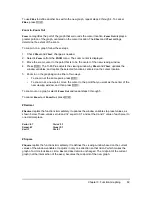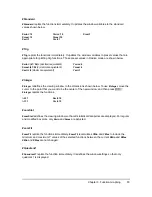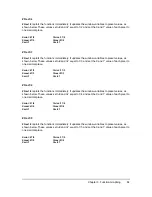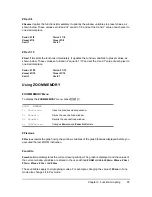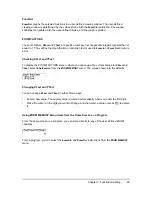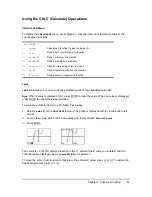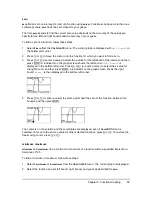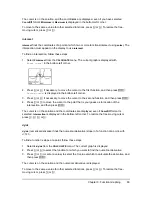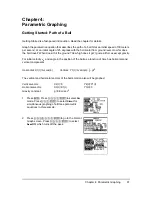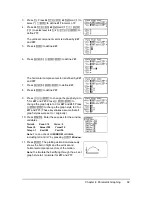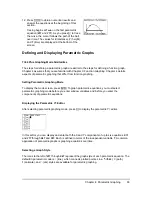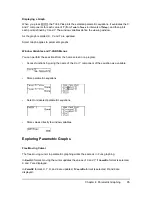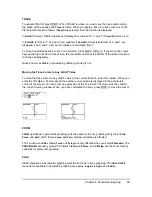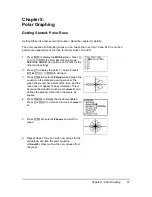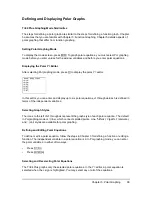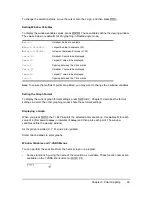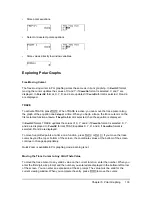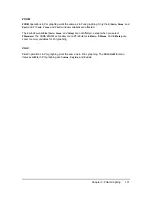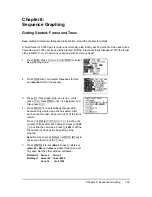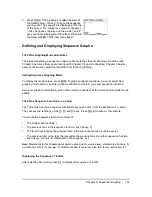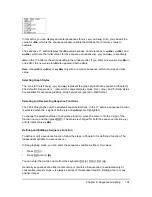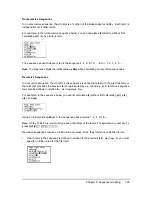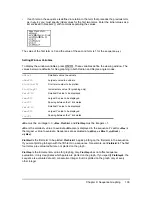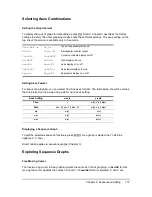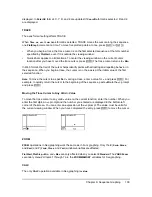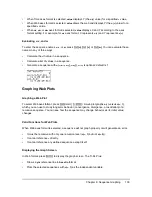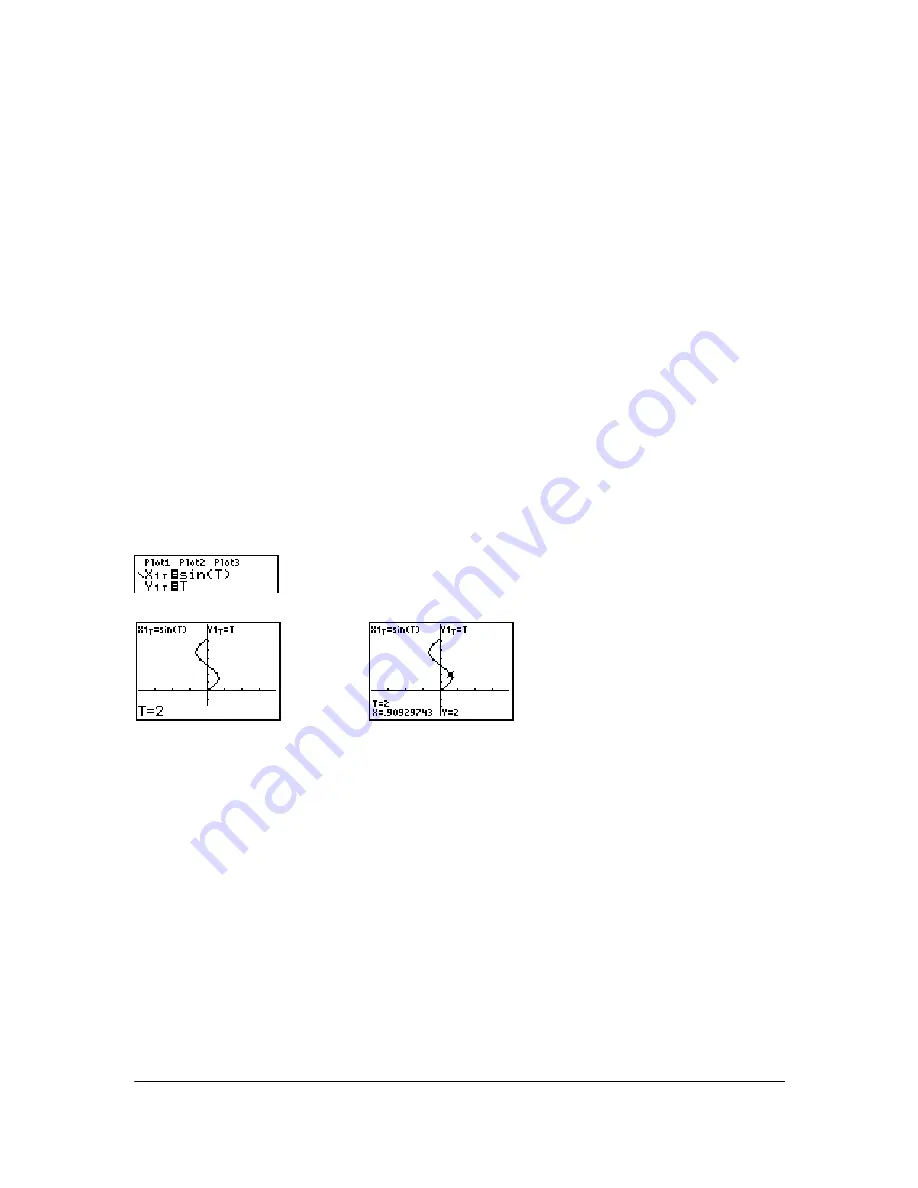
Chapter 4: Parametric Graphing
96
TRACE
To activate TRACE, press
r
. When TRACE is active, you can move the trace cursor along
the graph of the equation one
Tstep
at a time. When you begin a trace, the trace cursor is on the
first selected function at
Tmin
. If
ExprOn
is selected, then the function is displayed.
In
RectGC
format, TRACE updates and displays the values of X, Y, and T if
CoordOn
format is on.
In
PolarGC
format, X, Y, R,
q
and T are updated; if
CoordOn
format is selected, R,
q
, and T are
displayed. The X and Y (or R and
q
) values are calculated from T.
To move five plotted points at a time on a function, press
y |
or
y ~
. If you move the cursor
beyond the top or bottom of the screen, the coordinate values at the bottom of the screen continue
to change appropriately.
Quick Zoom is available in parametric graphing; panning is not.
Moving the Trace Cursor to Any Valid T Value
To move the trace cursor to any valid
T
value on the current function, enter the number. When you
enter the first digit, a
T=
prompt and the number you entered are displayed in the bottom-left
corner of the screen. You can enter an expression at the
T=
prompt. The value must be valid for
the current viewing window. When you have completed the entry, press
Í
to move the cursor.
ZOOM
ZOOM
operations in parametric graphing work the same as in Func graphing. Only the
X
(
Xmin
,
Xmax
, and
Xscl
) and
Y
(
Ymin
,
Ymax
, and
Yscl
) window variables are affected.
The
T
window variables (
Tmin
,
Tmax
, and
Tstep
) are only affected when you select
ZStandard
. The
VARS ZOOM
secondary menu ZT/Z
q
items
1:ZTmin
,
2:ZTmax
, and
3:ZTstep
are the zoom memory
variables for parametric graphing.
CALC
CALC
operations in parametric graphing work the same as in Func graphing. The
CALCULATE
menu items available in parametric graphing are
1:value
,
2:dy/dx
,
3:dy/dt
, and
4:dx/dt
.

